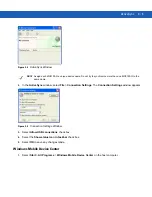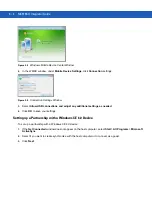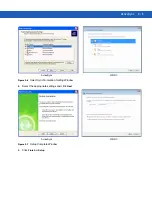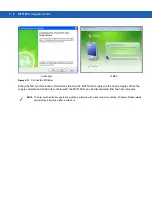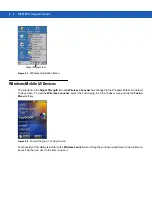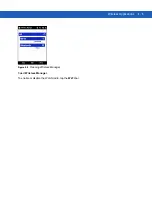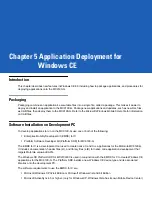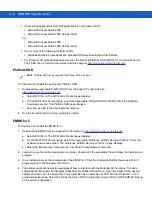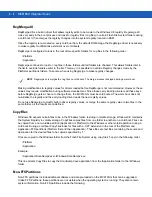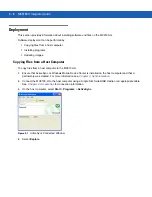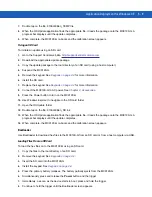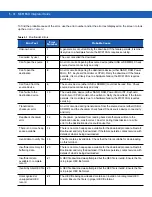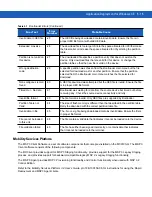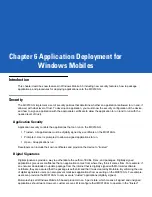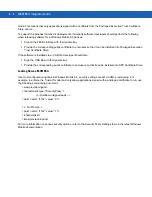
Application Deployment for Windows CE
5 - 3
Installing Other Development Software
Developing applications for the MC9190-G may require installing other development software, such as application
development environments, on the development PC. Follow the installation instructions provided with the software.
Software Updates
Download updates to the EMDK for C from the Support Central web site at:
http://supportcentral.motorola.com
Check this site periodically for important updates and new software versions.
In addition to the RAM-based storage standard on Windows CE, the MC9190-G is also equipped with a
non-volatile Flash-based storage area which can store data (partitions) that can not be corrupted by a cold boot.
This Flash area is divided into two categories: Flash File System (FFS) Partitions and Non-FFS Partitions.
FFS Partitions
The MC9190-G includes two FFS partitions. These partitions appear to the MC9190-G as a hard drive that the OS
file system can write files to and read files from. Data is retained even if power is removed.
The two FFS partitions appear as two separate folders in the Windows CE file system and are as follows:
•
Platform: The Platform FFS partition contains Motorola-supplied programs and Dynamic Link Libraries
(DLLs). This FFS is configured to include DLLs that control system operation. Since these drivers are
required for basic MC9190-G operation, only experienced users should modify the content of this partition.
•
Application: The Application FFS partition is used to store application programs needed to operate the
MC9190-G.
Working with FFS Partitions
Because the FFS partitions appear as folders under the Windows CE file system, they can be written to and read
like any other folder. For example, an application program can write data to a file located in the Application folder
just as it would to the Windows folder. However, the file in the Application folder is in non-volatile storage and is not
lost on a cold boot (e.g., when power is removed for a long period of time).
Standard tools such as ActiveSync can be used to copy files to and from the FFS partitions. They appear as the
“Application” and “Platform” folders to the ActiveSync explorer. This is useful when installing applications on the
MC9190-G. Applications stored in the Application folder are retained even when the MC9190-G is cold booted, just
as the Sample Applications program is retained in memory.
There are two device drivers included in the Windows CE image to assist developers in configuring the MC9190-G
following a cold boot: RegMerge and CopyFiles.
NOTE
If both Microsoft Visual C++ v3.0 and Microsoft Visual C++ v4.0 are installed on the development computer,
ensure Microsoft Visual C++ v4.0 launches.
Summary of Contents for MC9190-G
Page 1: ...MC9190 G Integrator Guide ...
Page 2: ......
Page 3: ...MC9190 G Integrator Guide 72E 140937 01 Rev A February 2011 ...
Page 6: ...iv MC9190 G Integrator Guide ...
Page 14: ...xii MC9190 G Integrator Guide ...
Page 66: ...2 42 MC9190 G Integrator Guide ...
Page 80: ...4 6 MC9190 G Integrator Guide ...
Page 114: ...7 6 MC9190 G Integrator Guide ...
Page 152: ...A 24 MC9190 G Integrator Guide ...
Page 176: ...C 6 MC9190 G Integrator Guide ...
Page 184: ...Glossary 8 MC9190 G Integrator Guide ...
Page 189: ......

